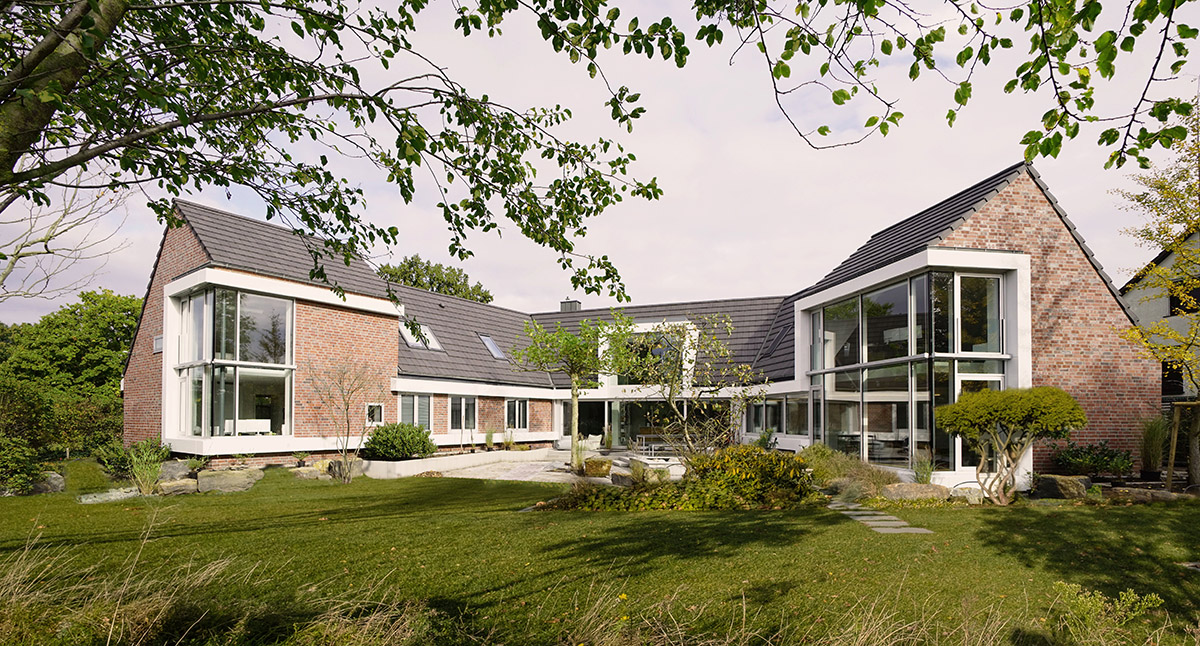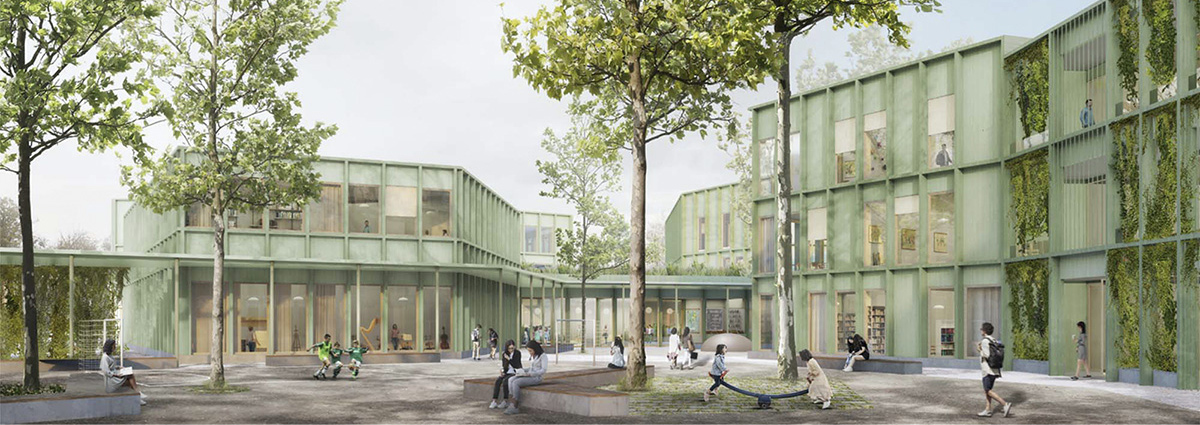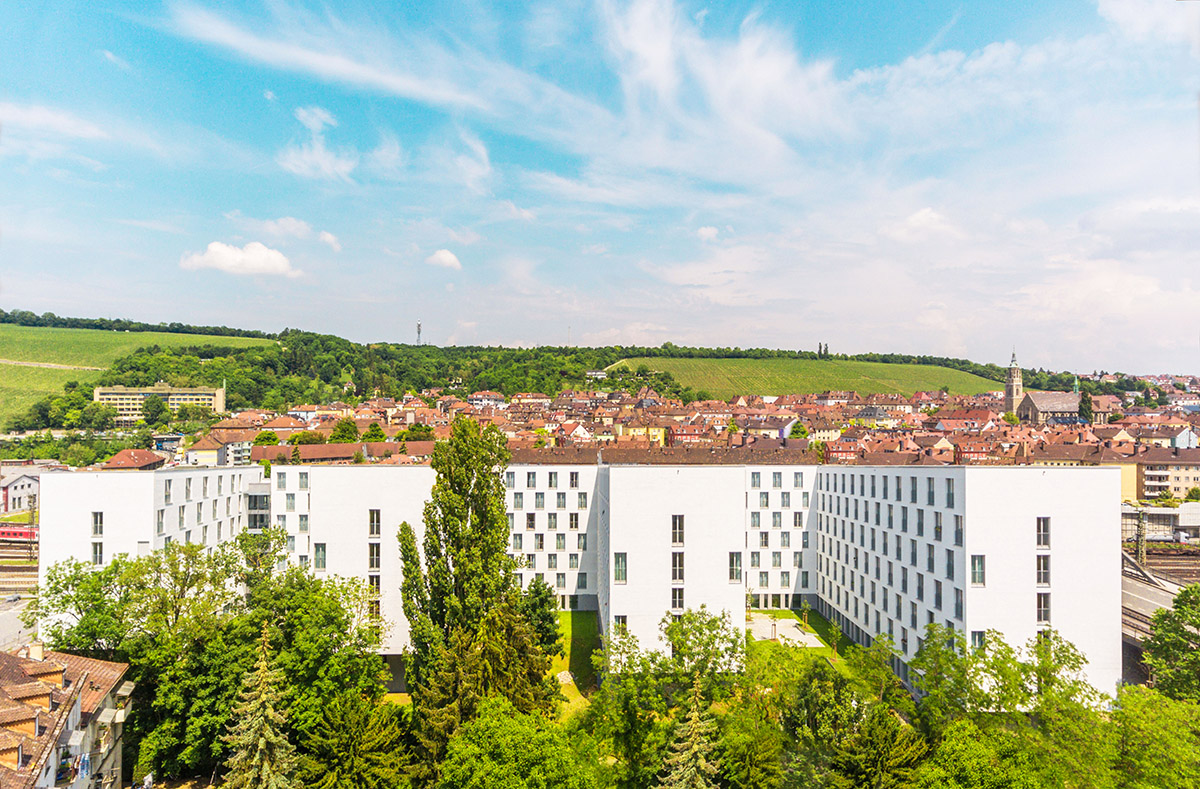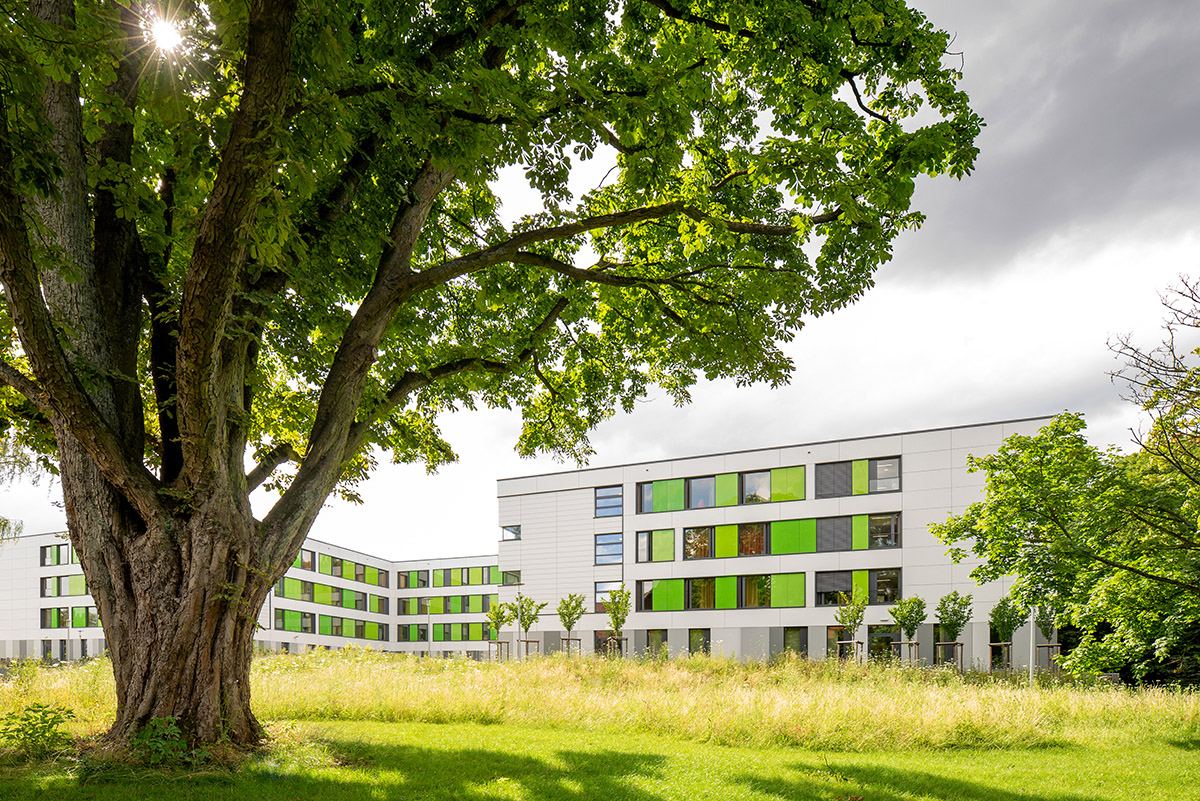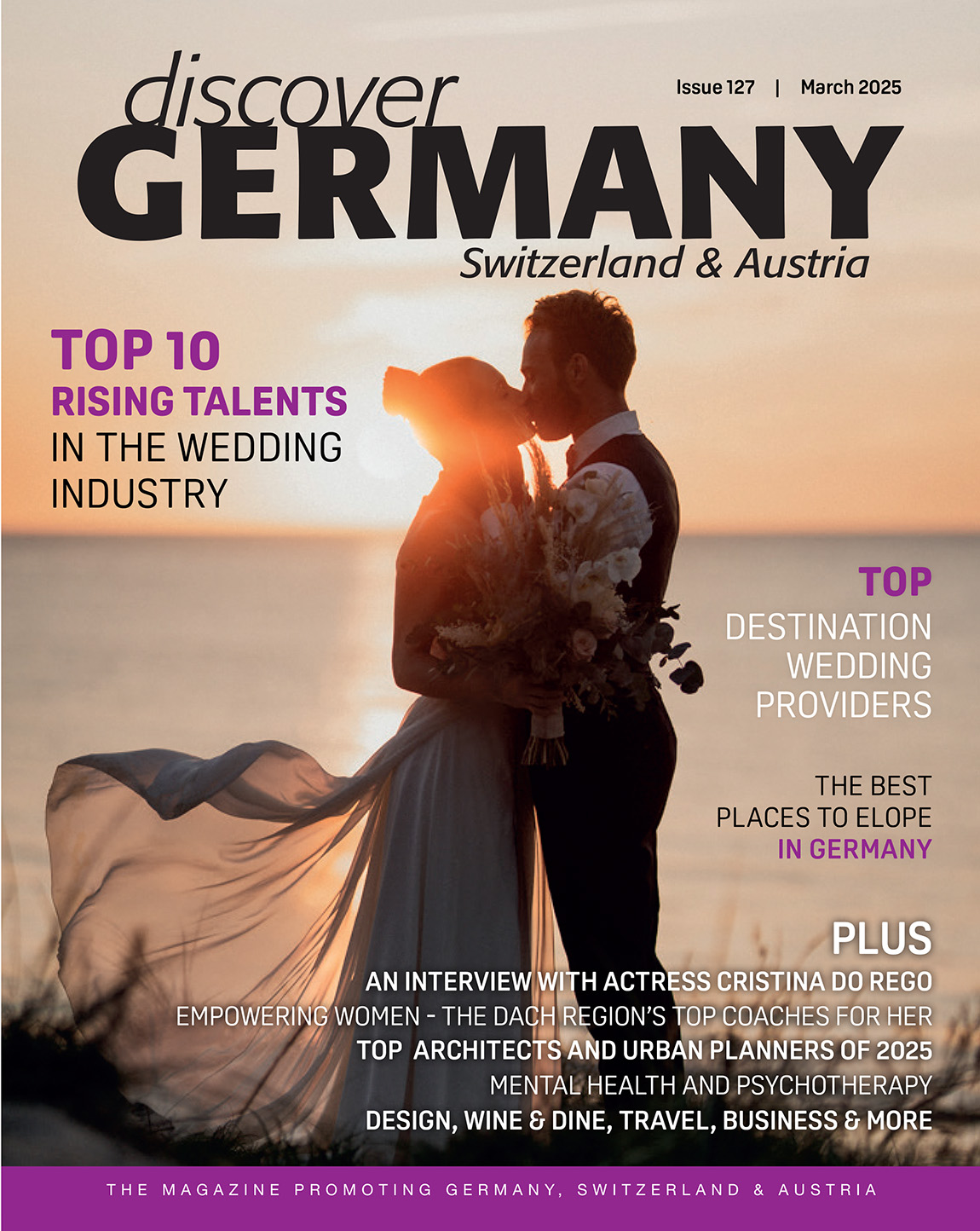tools off. architecture: HYBRID OFFICES ARE THE FUTURE
TEXT: JESSICA HOLZHAUSEN | PHOTOS: ELIAS HASSOS | PRODUCTION: ISA LIM AND SAMANTHA TARUVINGA®CONDE NAST GERMANY
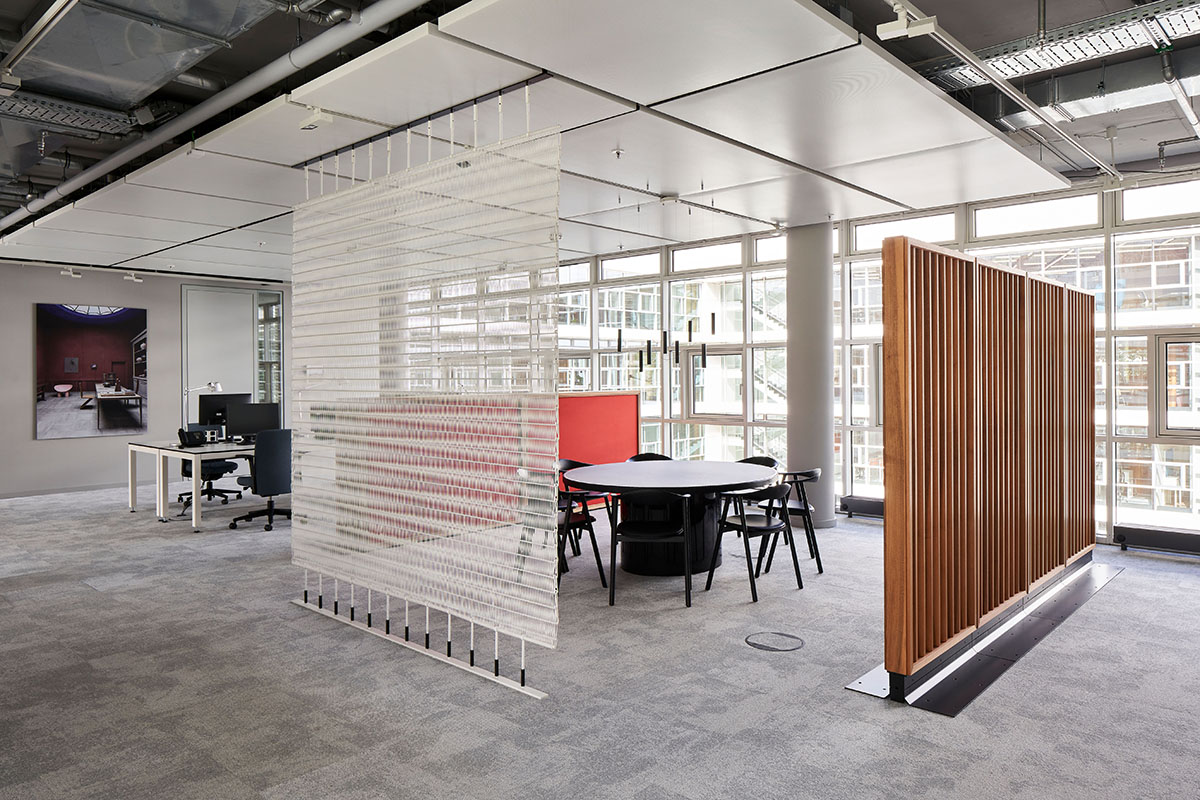
Meeting and working.
The Munich-based architectural office tools off.architecture founded by Eva Durant and Andreas Notter is an expert for new work typologies and has developed a contemporary office concept for the publisher Condé Nast, combining office and home office, work, leisure and communication spaces.
The topic home office is rightfully on the agenda, says architect Andreas Notter. He and his colleague Eva Durant are focusing on new ways of working in offices – for a long time only in creative industries, but recently other businesses have discovered this topic as well. “After the pandemic a lot of employees will keep their workspace at home,” states Andreas Notter. The future of work will be determined by hybrid offices: work from home and in the office will be in balance.
“It has been shown that both have an advantage and that a switch between locations is the optimal situation.” It is often easier to focus when working at home and the hours are much more flexible. “But what most miss after working alone for a couple of weeks is the immediate contact with colleagues,” says architect Eva Durant about workshop results among others at Condé Nast. Successful work needs communication and the feeling that everyone is pulling in the same direction. “What the home office can’t fulfil, the office has to provide,” says Notter.
At the end of Lockdown Condé Nast decided to offer a completely new office atmosphere instead of waiting, how the professional world might evolve. In the new office the areas for work, creating and living merge into a ‘second home’ for employees. Project work and living areas are sectioned with walnut partitions that allow eye contact with people at the desks, so that nobody feels excluded.
“We have developed the concept in collaboration with Condé Nast,” Eva Durant explains. “It’s a stroke of luck to have accompany that has the same views as oneself.” At the beginning there was also the idea to not have computer desks at all and to focus on the communicative aspects. “But we realized that people still come to the office to concentrate on work,” because they do not have the space or enough technical support at home. Andreas Notter compares it with sports: Some people need the motivation only a team can provide. “The concept proves that changes in the business world show great potential.”
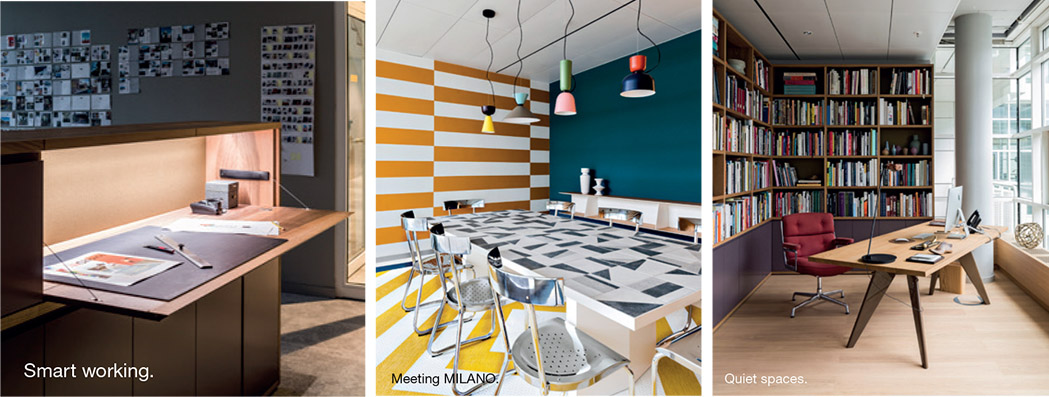
HYBRIDOFFICE ALS ARBEITSPLATZ DER ZUKUNFT
Das Münchner Architekturbüro tools off.architecture von Eva Durant und Andreas Notter ist ein Experte für neue Typologien des Arbeitens und hat für den Verlag Condé Nast ein neues Bürokonzept entwickelt, das Office und Homeoffice, Arbeit, Freizeit und Kommunikationsräume miteinander kombiniert.
Das Thema Homeoffice sei gerade mit Recht in aller Munde, sagt Architekt Andreas Notter. Er und seine Partnerin Eva Durant haben sich auf neue Formen des Büro-Arbeitens konzentriert – lange Zeit vor allem für Unternehmen in der Kreativbranche, doch inzwischen haben auch andere Branchen das Thema entdeckt. „Nach der Pandemie werden viele Mitarbeiter ihren Arbeitsplatz zuhause behalten“, so Andreas Notter. Das Arbeiten der Zukunft ist für ihn gekennzeichnet durch ein Hybridoffice: Arbeit zuhause und Arbeit im Büro werden sich die Waage halten.
„Es hat sich herausgestellt, dass beide Situationen ihre Vorzüge haben und dass ein Arbeiten im räumlichen Wechsel eine optimale Situation darstellt.“ Zuhause kann man sich oft besser konzentrieren und die Arbeitszeit lässt sich flexibler gestalten. „Aber was fast alle nach einigen Wochen ‚alleine arbeiten‘ vermissen, ist der direkte und unmittelbare Kontakt mit den Kollegen“, sagt Architektin Eva Durant über die Ergebnisse von Workshops unter anderem bei Condé Nast. Erfolgreiches Arbeiten braucht Kommunikation und das Gefühl gemeinsam „an einem Strang zu ziehen“. „Was das Homeoffice nicht erfüllen kann, muss das Office bieten“, ist sich Notter sicher.
Condé Nast entschloss sich zum Ende des Lockdowns eine komplett neue Arbeitsatmosphäre zu bieten, statt abzuwarten, wie sich die Arbeitswelt entwickeln würde. Im neu gestalteten Büro verschmelzen die drei Bereiche Working, Creating und Living, so dass eine Art ‚zweites Zuhause‘ für Mitarbeiter entstand. Die Flächen für Projektarbeit und Living sind durch Partitionen aus Nussbaum abgegrenzt, die einen Blickkontakt mit den Arbeitsplätzen erlauben, so dass sich keiner ausgeschlossen fühlt.
„Wir haben das Konzept gemeinsam mit Condé Nast entwickelt“, erläutert Eva Durant. „Es ist ein Glücksfall, ein Unternehmen zu haben, dass das genauso sieht wie wir.“ Anfangs gab es sogar die Idee, gar keine Computerarbeitsplätze zu schaffen und sich ganz auf die Kommunikationsaspekte zu konzentrieren. „Es hat sich aber herausgestellt, dass Leute doch zum konzentrierten Arbeiten ins Büro kommen“, weil ihnen zuhause die Motivation oder auch der technische Support fehlt. Andreas Notter vergleicht das mit dem Sport: Manch einer braucht die Motivation des Mannschaftssports oder den Ansporn der Kollegen. „Das Konzept zeigt, dass in der Veränderung der Arbeitswelten ein grosses Potenzial liegt.“
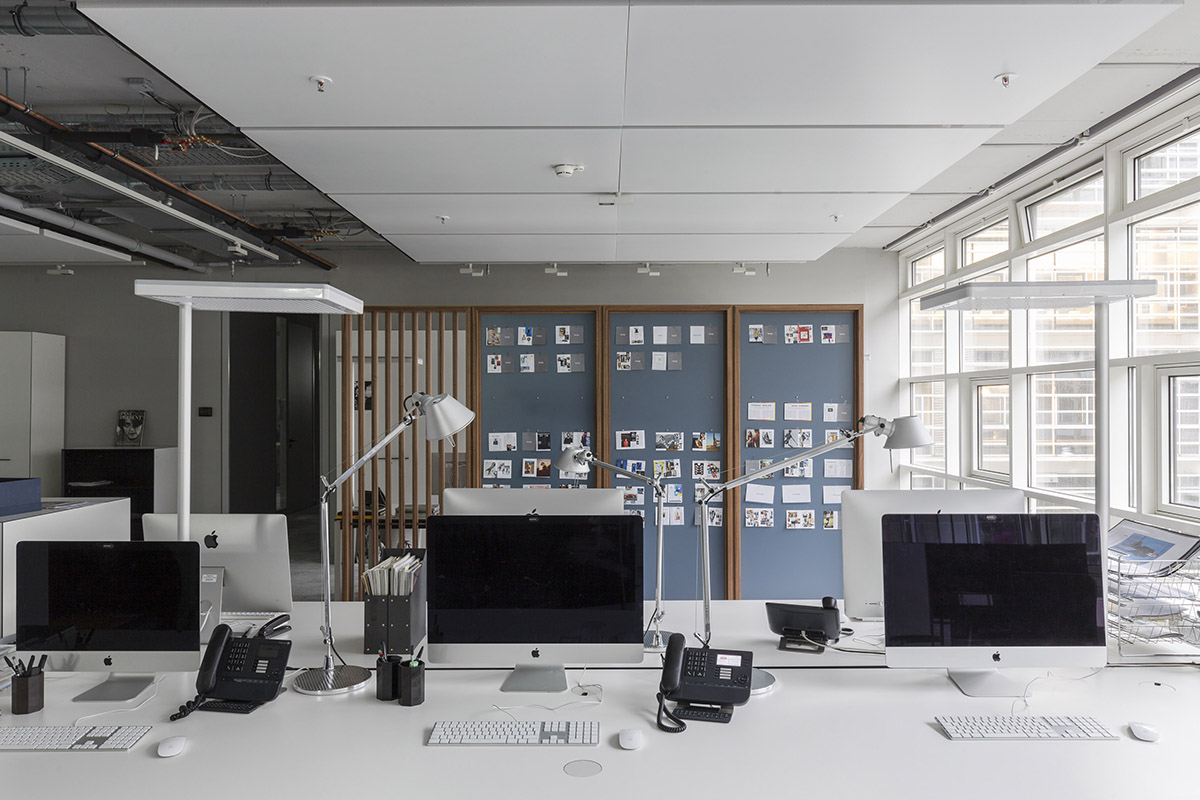
Smart partitions
Subscribe to Our Newsletter
Receive our monthly newsletter by email
